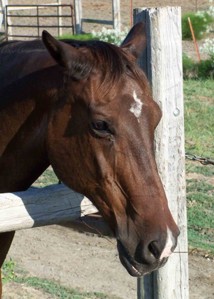The Athletic Development of the Dressage Horse

The logical goal of classical equitation is “…to explore and unfold the nature–given potentialities of each horse to its fullest.” So states Charles de Kunffy in his book The Athletic Development of the Dressage Horse.
Improperly done, riding can be hard on both horse and rider. The author maintains:
Knowledge of how to create the physiological circumstances under which motion in unity can prosper, be uninjurious and a source of pleasure is the task of scholarly equitation that produces the art of riding.
De Kunffy emphasizes that the rider must correct his or her behavior before trying to correct the horse. “Many unwanted actions by horses are caused, inadvertently, by their riders, particularly by those who still lack a perfectly balanced, independent, adhesive seat.”
The process of riding and developing a horse is an ongoing process. “Both the riding skills of the equestrian and the athletic skills of the horse should be simultaneously and habitually cultivated.” De Kunffy stresses, “The pleasure in riding should be found in seeking, not finding, perfection.”
The development of the horse cannot be forced. If we run into resistance, we must remember that our specific goals must remain flexible.
The means to our goals must always honor the horse by our respect for him and love for his individual virtues. The training methods should always promote calm, straight, supple and contented horses.
This book stresses a balance between reading and being coached. Furthermore: “There is a great difference between believing in what an instructor says or knowing it by the validation of first–hand experience.”
…the rider becomes liberated by knowledge, both theoretically and experimentally. For knowledge increases awareness and lends itself to exploring a greater number of possible choices!
De Kunffy emphasizes two tools for training: personal influence and manage patterns. He writes, “Horses are primarily schooled by the rider's influences and only assisted by the developmental virtues of patterns.” Still, the author uses much of his work to explain various patterns to help in certain aspects of training.
In discussing patterns, de Kunffy points out that simply performing the pattern is not as important as how it is performed. “When discussing the gymnastic value of patterns, we must always keep in mind that more important than the spatial progression of the horse is the activity within his structure.”
De Kunffy's purpose in writing this book is to help the rider develop this structural activity.